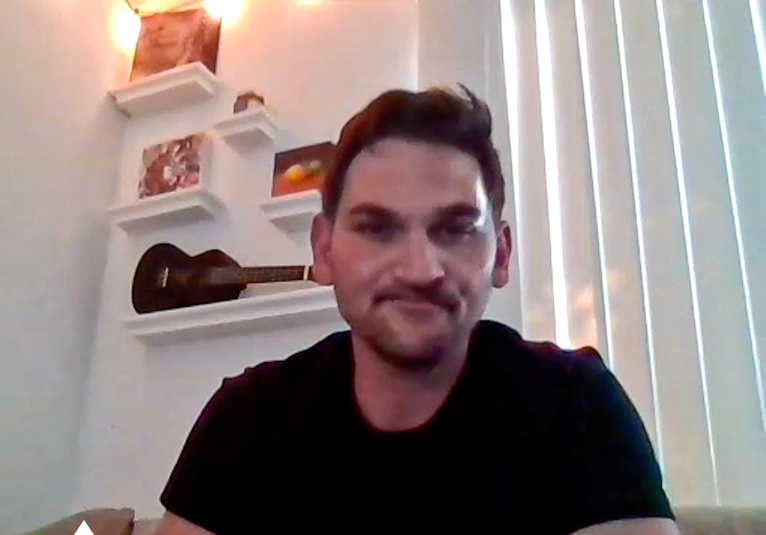Kira M Ingredient #1: Purpose
Hi, my name is Kira Mauseth. I’m a clinical psychologist. I have a private practice where I work with teenagers and adults. I also am a full-time senior instructor at Seattle University.
So I do a lot of teaching about disasters and around clinical psychology and things like resilience that we’re going to be talking about today. So today, in general, what I’m going to be covering is the four ingredients of resilience and why so many people are struggling with that. You may be tired of hearing about it. We’ve been talking about resilience throughout this pandemic, and people are pretty done. I get asked pretty regularly, “How much more resilience am I going to have to come up with here? How much further do I have to dig to come out of this thing okay?”
And I don’t have an answer to that question. I don’t have a finite example that I can give anyone. But what I do know is that people’s inherent capacity for resilience is basically limitless, and it certainly might not feel like that even on most days, but we do keep going.
And some of the evidence that resilience is just such a fundamental part of who we are is to look back at what we’ve already been through. That’s evidence that we’ve put in our rearview mirror. But it’s helpful sometimes to look back at everything from March 2020, and the summer, the murder hornets. I mean, my goodness, all those things that we went through and we did it. And it wasn’t always pretty and it was sometimes really uncomfortable or even scary. But we did it and that outcome, the fact that here we are in 2021, just continuing to plug away is evidence that resilience still remains something that people are capable of on a very deep level.
The first main ingredient of resilience is purpose, and that’s something that people really struggle with in any disaster, because the environmental circumstances tend to influence whether or not we can achieve our goals. And when we can’t achieve our goals, we feel like our purpose might be threatened. Like, what am I doing? Like, what is my motivation? Why am I getting out of bed?
And for folks who have experienced unemployment or major job changes or just job insecurity, in general, that sense of purpose and motivation can really be threatened and has been threatened throughout this last year and a half. So one of the things to keep in mind when we think about purpose is breaking it down on a much more basic biological level. Our body also has a sense of purpose in terms of four chemicals and neurotransmitters that we really need in order to feel good and in order to help build our resilience.
So those chemicals include dopamine and serotonin, which are two neurotransmitters that our body uses all the time and also endorphins, which is something maybe people are familiar with. And then oxytocin is the last one, and that’s actually a hormone.
But all four of those in combination create the happy chemicals that our brains need to really motivate us and get us going on every day. And for most people, we’ve had a series of experiences that have significantly depleted those chemicals and neurotransmitters.
So what I want to share today is a little bit of some suggestions, I guess, about how you can go about growing and developing and maintaining those chemicals in a healthy way. A lot of times people look for ways to enhance them by doing unsafe things, by taking risks, by engaging in risky behaviors, and by using substances.
So we know that substance use has been a challenge for a lot of folks in this pandemic, for sure. It is with every disaster. So finding healthy ways to develop those chemicals and to help our bodies basically work on our side rather than against us is important.
One of the things that all four of those neurotransmitters and chemicals have in common is movement. And I hate to be so cliché about it because we hear this all the time. But I am not suggesting that anybody get off the couch and go run a marathon. This is not that. This is about walking to your mailbox everyday or getting up between meetings and just moving your arms and legs around, doing a stretch that you normally wouldn’t do. Making a small change in movement can boost serotonin, it can boost dopamine, it can influence endorphins on all of those chemicals altogether. So it’s a healthy thing, in general.
Another element that is a healthy way to increase those happiness chemicals is to create a daily to-do list and mark those to-dos off with a checklist when you’ve succeeded in doing something. It sounds kind of weird and superficial, but I also have been known to write things down that I’ve already accomplished just to give myself the satisfaction of checking it off the list. And that helps with motivation and purpose, too. It’s just very reinforcing, and it helps us with dopamine production and release.
So making a list, achieving things, creating things… Those are all examples of ways to increase those happiness chemicals and then also anything that’s sensory. Taking a hot or a cold shower, eating a snack, but not a stress-eating snack, not a whole tub of Ben & Jerry’s, for example, but having a small snack.
Eating well and balancing that out can increase some of those chemicals and neurotransmitters, as well. So there are things you can find online that are lists of healthy ways to increase that stuff, and I guess that’s what I would suggest people consider when they make their plans, when they think about how they can enhance their motivation on a really deep biological and neurological level. Think about healthy ways to increase those chemicals and transmitters.
So let’s be clear about the to-do list, that it needs to be scalable for you. So anything that it feels like is an accomplishment or something that you have done, you could be proud of or just check off that list, it all counts. I’m not talking about cleaning your garage. I mean, you could, I guess if you wanted to do that, but the scalable sense of making and achieving those small goals, that’s what contributes to the chemicals and the neurotransmitters that we want.
So it doesn’t matter if it’s as simple as getting up five minutes earlier or going out to that mailbox or sending an email that you kind of have been putting off or avoiding that week or cleaning your garage, if that’s something that you want to do.
So the size of the goal on the to-do list or the size of the thing on the list does not matter. It’s different for every person based on the energy that you have available, how much sleep you got last night and the other resources that are there supporting you. So if you want to set some really small, manageable goals for yourself, that does the same thing chemically as setting a really big goal and achieving it.
The key is to make it achievable, then setting and achieving those goals, not setting something out on your to-do list that is so big that you can’t manage it because that’s actually reinforcing in the wrong direction. It makes people feel worse. And part of what we need to do in a disaster is experience that success.
Part of what we want to encourage people to do is think about the short term and long term with the neurochemicals. Some of them in terms of increasing them in a healthy way. Some of those reactions you’ll notice immediately, like taking a hot shower feels really good in that moment. Sometimes eating a fresh chocolate chip cookie feels really good in that moment, and your serotonin, your body responds to that immediately, whether it’s serotonin or dopamine or whatever it is.
And some of them, like the to-do lists, take a little while. It’s the sense of satisfaction with that that actually triggers the chemical to be enhanced. So sometimes even in the moment, it’s very satisfying to take a highlighter and write through it, like I did that to get a tiny little boost. And it might not be something that you’re super consciously aware of.
But over time, if you engage in that practice over a series of days or weeks, even if there’s only two things and they’re tiny on your to-do list, you consistently experience the satisfaction associated with checking things off the list. That gives your brain a big boost moving into the month ahead in terms of dopamine.
So it can be both. It can be an immediate experience. If you want to run a marathon, you will get some endorphins from that right away. But our brain responds to things with different time frames, so some of them can be immediate, and some of them can pay off in the long run and we’re making an investment in both when we do the healthy things.










